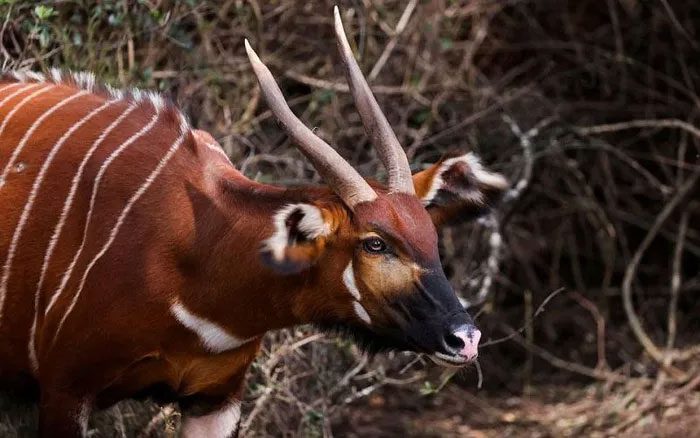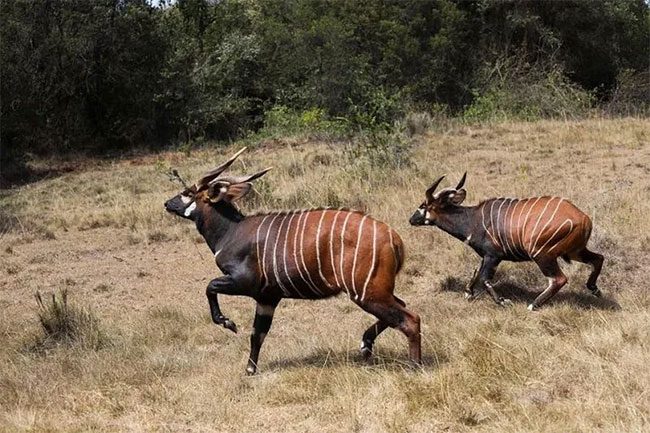Recently, five Bongo antelopes were released into a sanctuary in Kenya, marking a significant milestone in the fight for the survival of this species, which now has fewer than 100 individuals remaining in the wild.
Listed as critically endangered, the chestnut-colored animal with white stripes is one of the largest forest antelopes and is native to the tropical rainforests in four regions: Mount Kenya, Eburu, Mau, and Aberdares in Kenya.

A critically endangered Bongo antelope seen at the Mount Kenya Wildlife Sanctuary near Nanyuki, Kenya, on March 9, 2022. (Photo: Reuters).
A recent wildlife survey in the East African nation reported only 96 Bongo antelopes left in the wild. According to predictions from the International Union for Conservation of Nature (IUCN), the population of Bongo antelopes will continue to decline without direct intervention.
The Mount Kenya Wildlife Conservancy (MKWC), the Kenya Wildlife Service (KWS), and the Kenya Forest Service (KFS) have been leading a breeding and re-release program for Bongo antelopes for the past 20 years.
Specifically, 18 Bongo antelopes (4 males and 14 females) were brought from 14 zoos across the United States to MKWC in Nanyuki, near Mount Kenya. Five individuals were released into the 314-hectare Mawingu Sanctuary on March 9, marking the “descendants” of the Bongo antelope population from the U.S.
These animals once roamed in large numbers, but their population has severely declined since the 1950s due to poaching, wildlife trafficking, predation, and disease, particularly during the outbreak of rinderpest in the 1980s.
Dr. Robert Aruho, head of veterinary services at MKWC, stated: “The real work is just beginning. We must ensure that the released Bongo antelopes can thrive and survive in the sanctuary and eventually in the wild.”

Two of the five Bongo antelopes released at Mawingu Sanctuary near Nanyuki, Kenya, on March 9, 2022. (Photo: Reuters).
The pristine Mawingu Sanctuary includes a natural forest that provides a vast space for the continued release of Bongo antelopes, preparing them for survival in the wild. The long-term vision of the Kenyan government is to grow the Bongo antelope population to 750 individuals by 2050.
Accordingly, 10 Bongo antelopes will be released into the sanctuary each year, divided into two batches of five. It is estimated that by 2025, the sanctuary will have between 50 and 70 Bongo antelopes fully reintroduced.
Kenya’s Minister of Tourism and Wildlife, Najib Balala, stated: “The Bongo antelope is one of the iconic animals of Kenya. This species can only be found in Kenya, and they are critically endangered. Establishing the sanctuary is an important step in effectively carrying out their reintroduction.”
According to wildlife experts in Kenya, the long-term success of the Bongo antelope release and ensuring their survival in the wild largely depends on the support of local communities in surrounding areas, as most threats to the population decline stem from human activities.
The conservation agency is collaborating with these communities to restore degraded forest areas on Mount Kenya through a reforestation program. So far, 3,000 community members have been mobilized to plant over 35,000 native tree species, with plans to plant an additional 5,000 trees this year.





















































